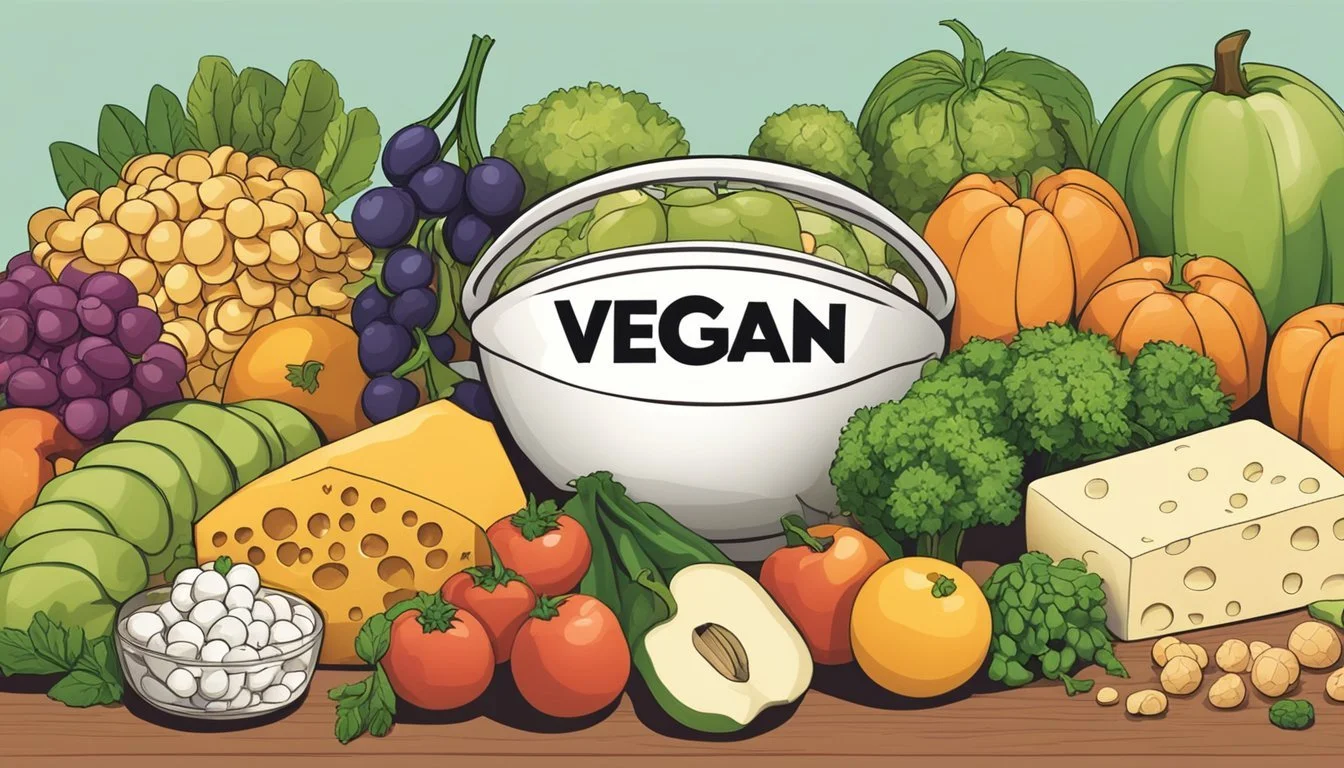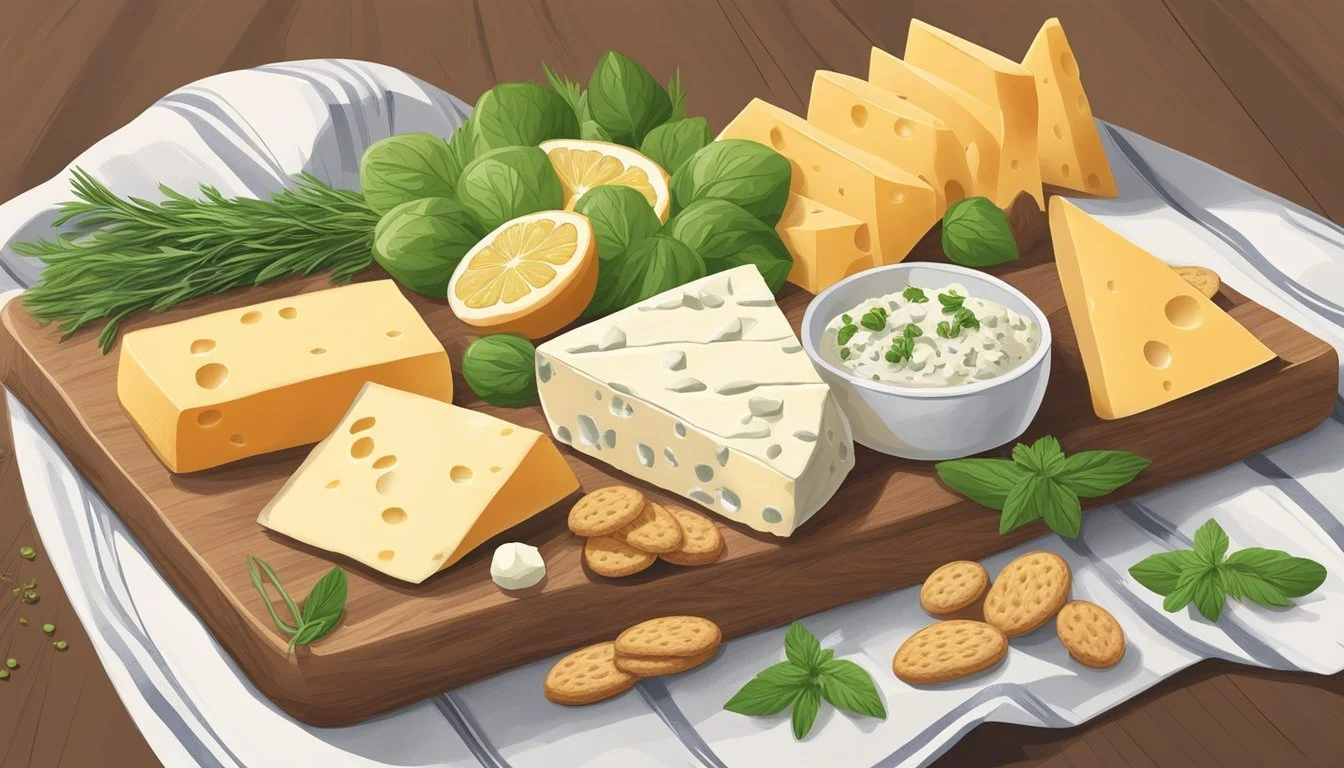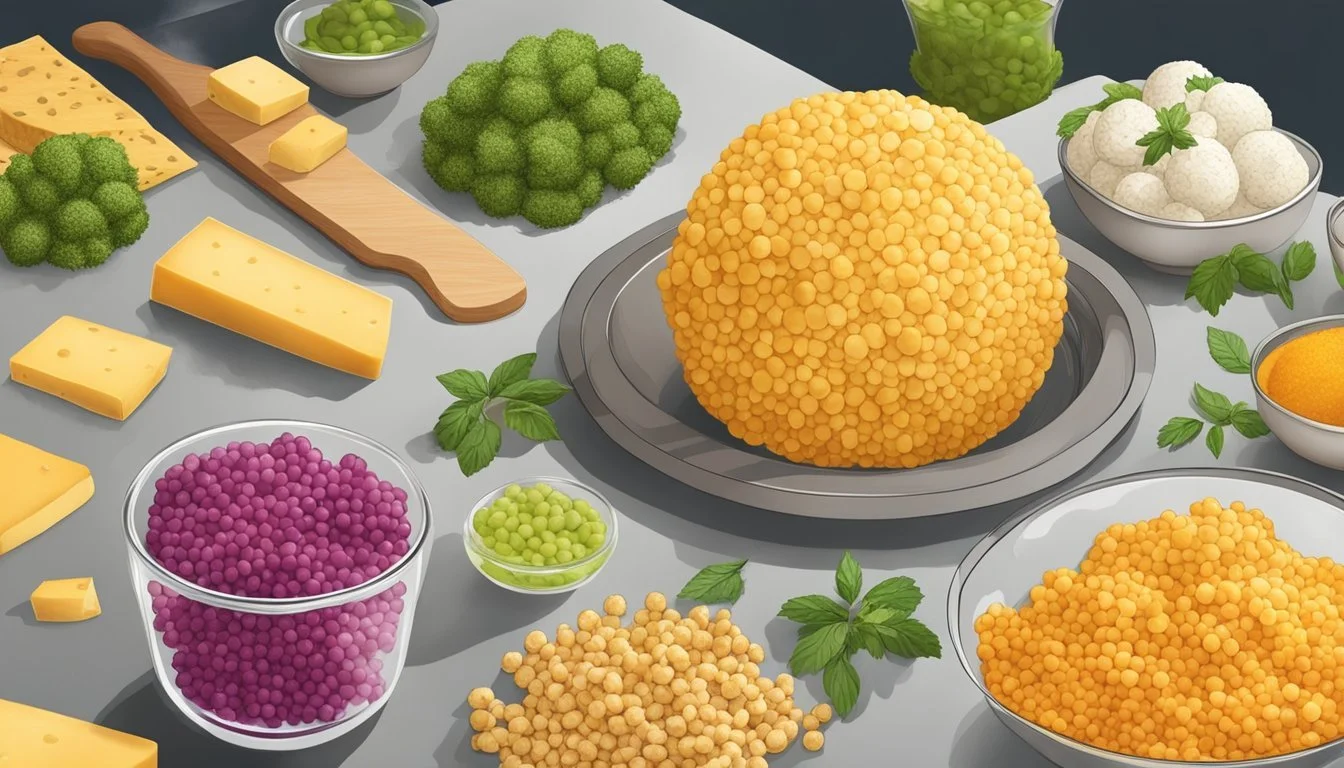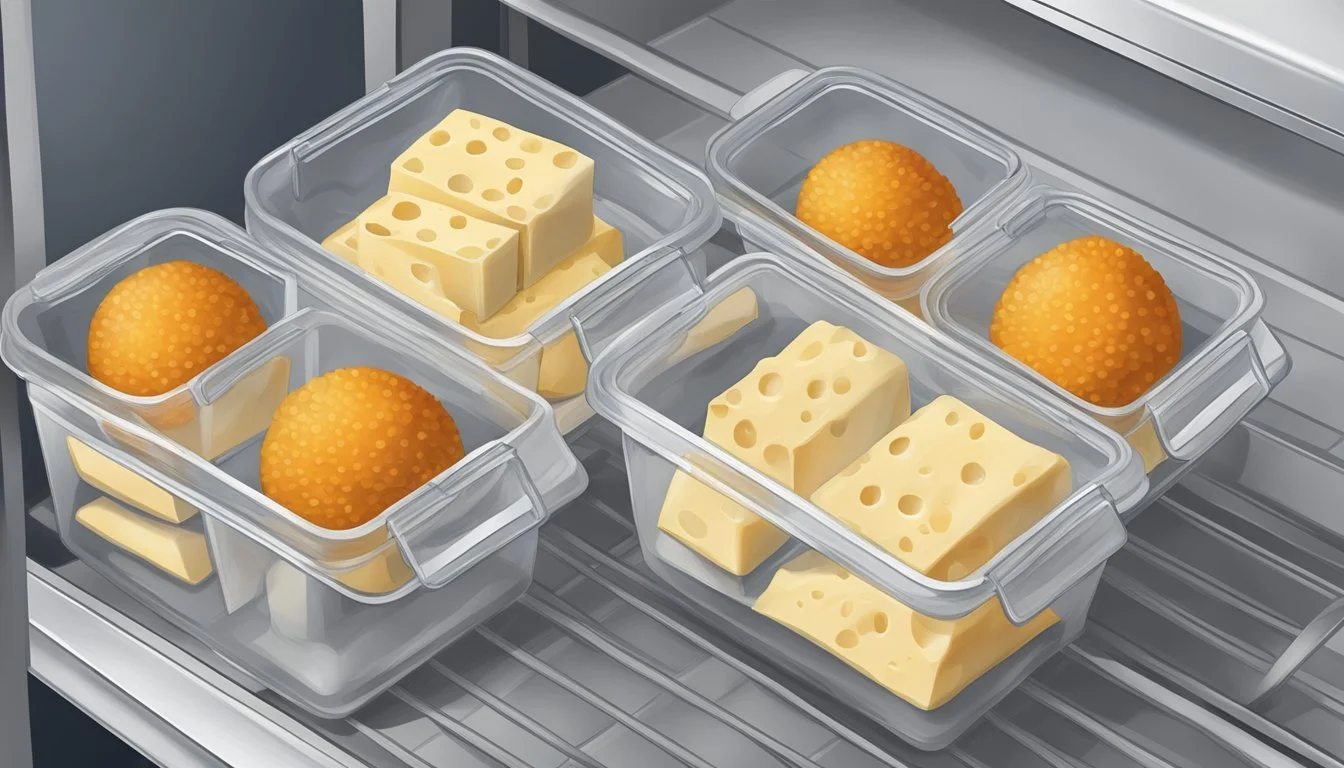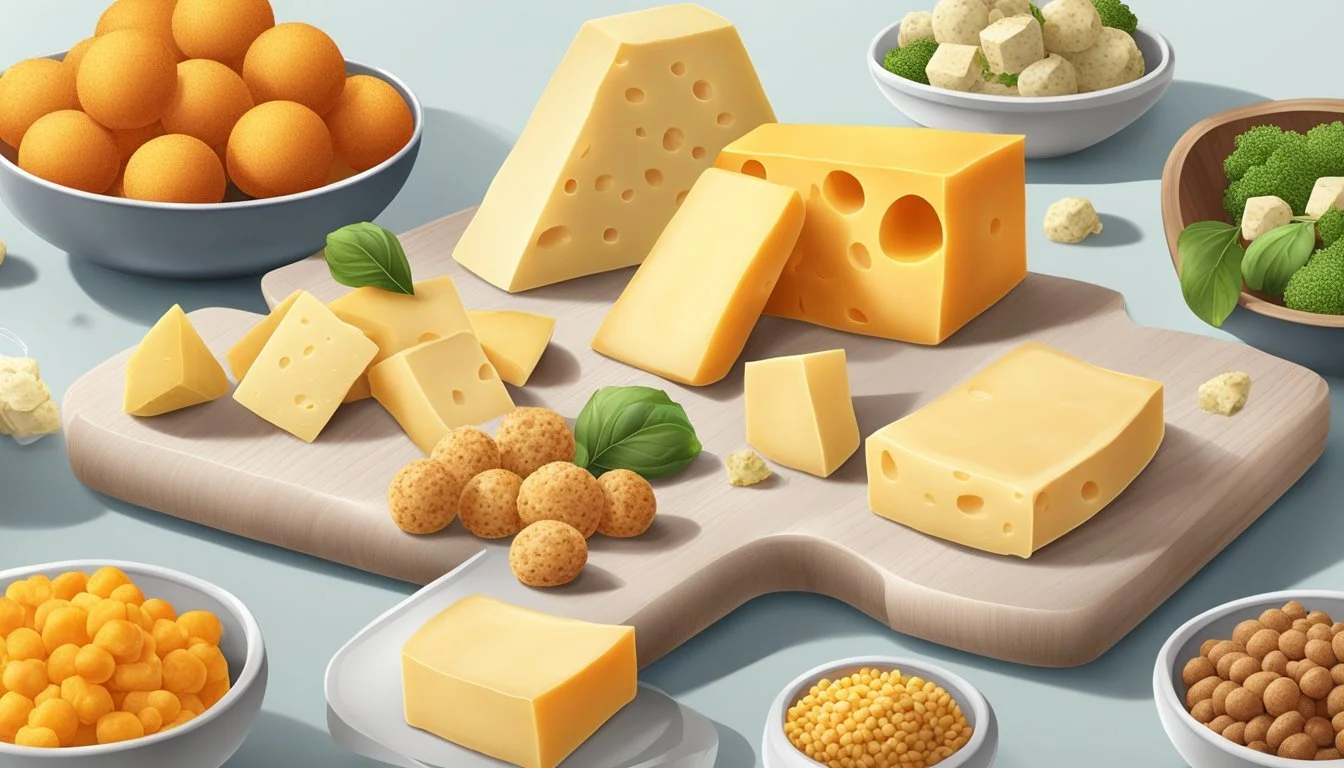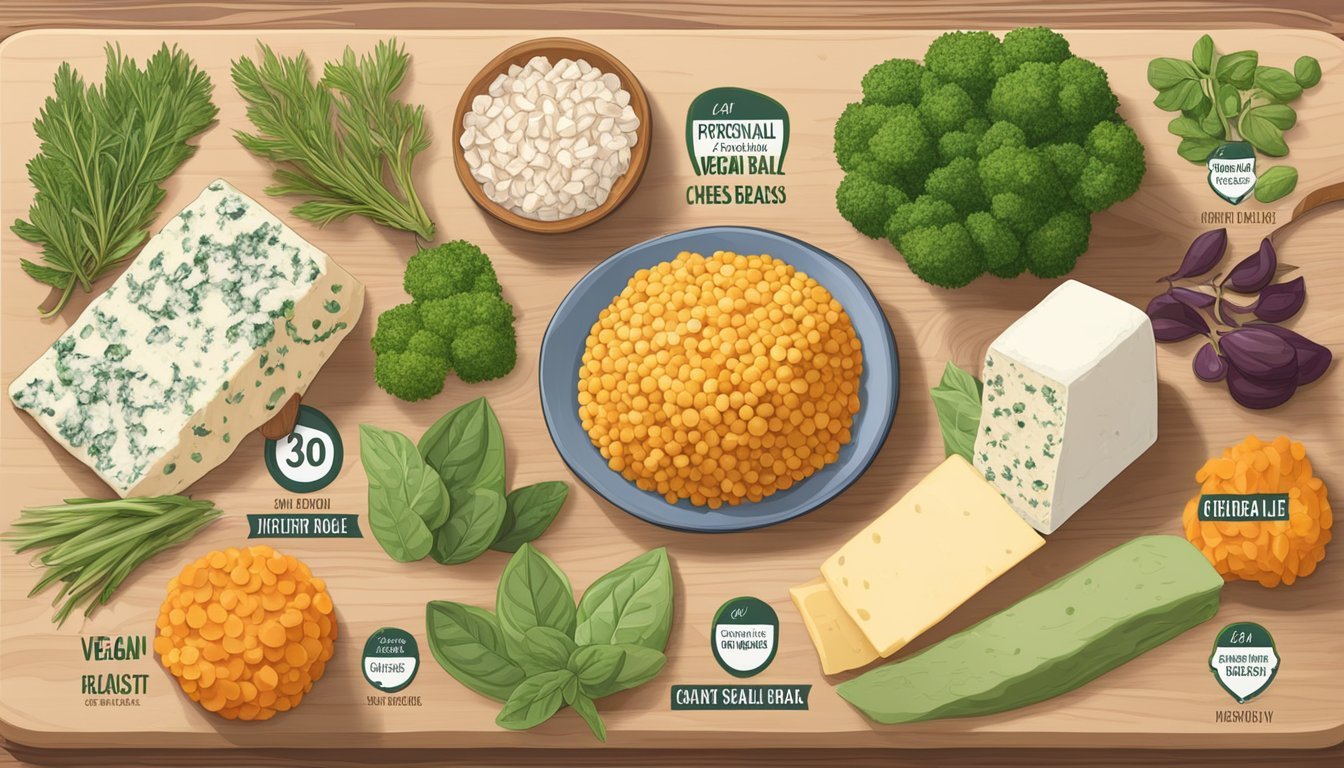Are Cheese Balls Vegan?
Unveiling Their Dietary Status
Traditional cheese (What wine goes well with cheese?) balls, as one might find in appetizers (What wine goes well with appetizers?) at parties or family gatherings, are typically made from a blend of cheeses and other ingredients to form a spreadable sphere. However, as more individuals adopt vegan lifestyles or explore dairy-free options, the question arises as to whether cheese balls can be vegan. The answer is a resounding yes, vegan cheese balls do exist.
Vegan cheese balls are crafted using non-dairy alternatives that aim to replicate the texture and flavor of their traditional counterparts. Ingredients such as vegan cream cheese, nutritional yeast, and various nuts like cashews are common in vegan cheese ball recipes. These plant-based versions also incorporate a mix of spices, herbs, and other flavorings to achieve a delicious and convincing cheesy taste suitable for vegans and those with lactose intolerance.
The market's and the internet's response to the demand for vegan cheese balls is a selection of recipes and ready-made options. Home cooks can enjoy the process of creating their own vegan cheese balls with relative ease, thanks to the availability of simple recipes and accessible ingredients. This demonstrates how traditional dishes can be adjusted and reinvented to suit a wide range of dietary preferences while still delivering on taste and presentation.
Understanding Veganism
In exploring veganism, one must consider the dietary choices and the ethical implications tied to this lifestyle. Veganism goes beyond mere diet; it encompasses a comprehensive commitment to abstain from animal products for various reasons.
Defining Vegan Foods
Vegan foods are items that do not contain any animal-derived components. This encompasses meat, dairy, eggs, and honey, along with less obvious ingredients such as gelatin, which is derived from animal collagen, and some food colorings. Vegetarian foods, on the other hand, may include dairy or eggs, but still exclude meat. Plant-based diets focus on foods derived from plants, but unlike veganism, may not strictly exclude all animal products. For a food to be considered vegan, it must meet the following criteria:
No animal-derived ingredients
Ingredients must not be processed using animal products
Dairy-free, indicating the exclusion of milk products from cows or other animals
Examples of vegan foods include:
Fruits and vegetables
Legumes: beans, lentils
Nuts and seeds
Plant-based milks (soy, almond, oat)
Tofu and tempeh
Veganism and Ethics
The ethical component of veganism extends to a philosophy that regards the life and welfare of all animals as worthy of protection. Many vegans choose this lifestyle to take a stand against animal cruelty and the exploitation inherent in factory farming and other forms of animal use. They advocate for the following ethical principles:
Reduction of animal suffering: Avoiding products and services that harm animals.
Environmental conservation: Recognizing the impact of animal agriculture on the environment.
Health considerations: Believing that a vegan diet provides numerous health benefits and can reduce the risk of certain diseases.
Veganism positions itself as an ethical alternative, encouraging people to reconsider their consumption habits in favor of a more compassionate and sustainable world. This ethical viewpoint extends into all aspects of life, including clothing, cosmetics, and entertainment, leading to choices that are mindful of animal welfare.
What Are Cheese Balls?
Cheese balls are a popular appetizer often featured at parties, holidays, and events such as game days and potlucks. They are known for their rich, creamy texture and versatility in ingredients and flavors.
Cheese Balls Ingredients
Cheese balls typically consist of:
Cheese: The base, usually cream cheese or sometimes a blend including cheddar.
Flavor Add-ins: Such as onions, pimientos, or garlic.
Coating: Often nuts or herbs that cover the exterior.
These ingredients are blended together, shaped into a ball, and then chilled to hold their form.
Non-Vegan Ingredients in Cheese Balls
The primary non-vegan ingredient in traditional cheese balls is:
Cheese: Predominantly made from dairy, like cream cheese and cheddar, which are animal-derived.
Apart from cheese, some recipes may also include other non-vegan items such as Worcestershire sauce or certain types of flavorings. Therefore, standard cheese balls are not suitable for a vegan diet.
Vegan Alternatives to Cheese
For those following a vegan lifestyle or seeking dairy-free options, a variety of vegan cheeses are available that mimic the taste, texture, and meltability of traditional cheese. These alternatives are made using plant-based ingredients and can be found in both store-bought varieties or can be made at home using simple ingredients.
Vegan Cheese Varieties
Store-bought vegan cheeses come in different forms such as shreds, slices, and blocks. Popular base ingredients include:
Coconut oil and starches: These provide the creamy texture and meltable quality, commonly used in vegan mozzarella and cheddar alternatives.
Nut milks: Almonds, cashews, and macadamia nuts serve as the foundation for many artisanal vegan cheeses.
Soy protein: Tofu and soy milk are used in some vegan cheeses for their texture and protein content.
Yeast: Nutritional yeast is often used to add a cheesy flavor to vegan products.
The variety expands to include vegan cream cheese, typically made from almond or soy milk, and vegan queso, which combines cashews and nutritional yeast to create a smooth, spicy dip perfect for vegan nachos.
Homemade Vegan Cheese Options
Making homemade vegan cheese can be a fulfilling experience, with the added benefit of controlling the ingredients and flavors. Common recipes include:
Cashew cheese: Soaked cashews are blended with water, nutritional yeast, lemon juice, and seasonings to create a versatile cheese that can be spread or heated for a creamy sauce.
Vegan mozzarella: This typically involves combining a base of cashews or almonds with a binder such as tapioca starch for stretchiness, and adding cultured ingredients like miso or probiotics to develop a depth of flavor similar to dairy mozzarella.
A basic format for creating homemade vegan cheese includes:
Soaking nuts (cashews are popular) to soften them.
Blending the soaked nuts with plant-based liquids and seasonings.
Adding nutritional yeast for a cheesy flavor.
Optional: Using setting agents like agar-agar to achieve the desired consistency.
One can find numerous vegan cheese recipes online that provide step-by-step guidance for creating these delicious alternatives at home.
Nutritional Considerations for Vegan Cheese
Vegan cheese offers an alternative to dairy cheese, presenting both nutritional benefits and potential concerns that must be carefully considered by consumers.
Health Benefits of Vegan Cheese
Vegan cheese is often made from nuts, soy, root vegetables, or other plant-based ingredients, that can potentially provide various nutrients important for a balanced diet. Nutritional yeast, a common ingredient in vegan cheese, is a significant source of B vitamins, especially B12, which is a crucial nutrient often lacking in vegan diets. Some vegan cheeses are also fortified with calcium and potassium, mirroring the nutrient profile of traditional dairy cheese. The plant-based origins of vegan cheese offer dietary fiber, which is absent in dairy cheese, contributing to better digestive health.
Potential Nutrition Concerns
However, consumers should be aware of the nutritional content when choosing a vegan cheese, as not all products are created equal. Vegan cheeses can be high in calories and fat, particularly saturated fat, depending on the primary ingredients used, such as coconut oil or cashews. Another concern is the sodium content; like traditional cheese, vegan cheese can be high in sodium, which can contribute to high blood pressure if consumed in excess. Additionally, they might lack protein compared to dairy cheese, as plant-based proteins are often less in quantity. Some vegan cheeses may contain added sugars and carbohydrates to enhance flavor and texture, which could affect blood sugar levels. It is important for consumers to read labels and choose options with lower levels of undesirable nutrients and fortified with beneficial ones, like nutritional yeast for B vitamins and calcium for bone health.
How to Make Vegan Cheese Balls
Creating a vegan cheese ball requires a thoughtful selection of plant-based ingredients that mimic the creaminess and tang of traditional cheese balls. Crafting the perfect appetizer involves blending these ingredients and seasoning them to make a delectable treat for any occasion.
Vegan Cheese Ball Ingredients
A vegan cheese ball typically consists of the following plant-based elements:
Base: Vegan cream cheese or a blend of soaked raw cashews are often used as the primary base for the cheese ball.
Texture and Flavor Enhancers: Add-ins such as nutritional yeast, lemon juice, and a variety of herbs (like dill, chives, or basil) lend the cheese ball its characteristic flavor.
Seasoning: Common seasonings include garlic (powder or fresh), onion powder, salt, and black pepper.
Nuts: Toasted pecans or other nuts such as almonds or walnuts are sometimes included within the cheese mixture or used as a coating for the finished ball.
Preparation and Cooking Instructions
The process for making a vegan cheese ball involves a few key cooking steps:
Process the Base: Combine the soaked cashews or vegan cream cheese with lemon juice, nutritional yeast, garlic, and salt in a food processor until smooth.
Enhance the Flavor: Mix in finely chopped herbs along with any other desired seasonings to infuse the mixture with flavor.
Form the Ball: Transfer the mixture to a bowl lined with plastic wrap, then mold it into a ball by twisting and sealing the wrap.
Chill and Serve: To firm up, place the vegan cheese ball in the refrigerator or freezer until set, which generally takes about an hour.
Coat with Nuts: Roll the chilled cheese ball in crushed nuts to create a crunchy outer layer.
By following these steps, one can prepare a scrumptious vegan cheese ball that satisfies both taste and nutrition.
Recipe Customization and Flavoring
When crafting a vegan cheese ball, the versatility in flavoring comes from a myriad of herbs, spices, nuts, and creative add-ins. Balancing these ingredients not only broadens the flavor profile but can also enhance the visual appeal with specks of color from herbs and the textural contrast provided by nuts.
Herbs and Spices Options
Herbs and spices infuse vegan cheese balls with distinctive flavors. The use of fresh or dried herbs such as basil, chives, and parsley offers an aromatic freshness. Garlic powder adds a savory depth, while spices like smoked paprika and paprika contribute a smoky essence and vibrant color. A sprinkle of sea salt can emphasize all the flavors within the cheese ball.
Popular Herbs and Spices:
Basil
Chives
Parsley
Garlic Powder
Sea Salt
Nut and Seed Variations
Nuts provide a crunchy texture and rich flavor to vegan cheese balls. Pecans and walnuts, toasted for added depth, are commonly used. Almonds can be employed for a more subtle nuttiness. Seeds such as sunflower or pumpkin can serve as a nut-free alternative yet still contribute a satisfying crunch.
Nut and Seed Options:
Pecans (toasted)
Walnuts
Almonds
Sunflower Seeds (as a nut-free option)
Creative Vegan Cheese Ball Add-Ins
For more complex flavors and textures, a range of unique add-ins can be blended into vegan cheese balls. The tanginess of vinegar or lemon juice can brighten the overall taste. Incorporating miso paste, particularly white miso, introduces umami elements. These ingredients also help in achieving the desired firmness and color.
Innovative Add-Ins:
White Vinegar or Apple Cider Vinegar
Fresh Lemon Juice
White Miso Paste
Vegan Cheese Ball Serving Suggestions
A vegan cheese ball is a versatile and appealing appetizer that can elevate any gathering. The following suggestions ensure its flavors are enjoyed to the fullest with various accompaniments and presentation ideas.
Accompaniments
For serving, one should consider a range of complementary and crisp options that pair well with the rich and creamy texture of vegan cheese balls:
Crackers: A selection of whole grain, seeded, or gluten-free options.
Bread: Slices of crusty baguette or artisanal breads can be offered.
Toast: Mini toasts can provide a crunchier texture against the soft cheese.
Tortilla Chips: A sturdy vessel, ideal for scooping and dipping.
Cucumbers: Fresh cucumber slices make a refreshing and low-carb option.
Dip: Use smaller cheese balls as flavorful dunkers for an array of dips.
Presentation Ideas
The visual appeal of a vegan cheese ball can be enhanced with thoughtful presentation:
Cheese Board: Position the cheese ball on a wooden board surrounded by neat rows or clusters of accompaniments.
Platter Style: Lay out a platter with the vegan cheese ball in the center, creating a vibrant array of snacks spiraling outwards.
Individual Servings: Consider pre-slicing the cheese ball or shaping mini balls for single servings; this can make for both an elegant and hygienic option.
Incorporate these suggestions to present the vegan cheese ball confidently, showcasing both its taste and aesthetic appeal.
Storing and Freezing Vegan Cheese Balls
Proper storage is crucial to maintain the freshness and texture of vegan cheese balls, whether for short-term enjoyment or longer preservation through freezing.
Short-Term Storage Tips
For short-term storage, vegan cheese balls should be kept in an airtight container or wrapped securely in plastic wrap to prevent them from drying out. They should be refrigerated and can typically last for up to a week. It’s important to note that the container must be sealed properly to avoid absorbing any odors from the refrigerator.
Refrigerator: Place in an airtight container or wrap in plastic wrap.
Duration: Up to 1 week.
Freezing and Thawing Methods
When freezing vegan cheese balls, first ensure they are tightly wrapped in plastic wrap or sealed in an airtight container to avoid freezer burn. They can be frozen for up to a month. To thaw, one should place the frozen cheese ball in the refrigerator for several hours or overnight until completely thawed. It’s recommended to consume the cheese ball soon after thawing to enjoy its best quality.
Before freezing:
Wrap tightly in plastic wrap or place in an airtight container.
Label with the date to keep track of how long it’s been stored.
Freezing duration: Up to 1 month.
Thawing:
Thaw in refrigerator for several hours or overnight.
Consume soon after thawing for best taste and texture.
Special Considerations
When adapting cheese balls to be vegan, it's essential to consider potential food allergies and dietary restrictions. Adequate substitutions and gluten-free options are available to ensure everyone can enjoy this dish without concern.
Allergy-Friendly Substitutions
For individuals with nut allergies, traditional cashew-based vegan cheese can be replaced with seeds, like sunflower or pumpkin, which provide a similar texture. Coconut oil is often used in vegan cheese for its saturated fat content, which helps to solidify the cheese. However, for those allergic to coconut, one can opt for butter-like spreads made from olive or avocados.
Gluten-Free Options
Even though most vegan cheese ball ingredients are naturally gluten-free, certain added flavors or coatings may contain gluten. To ensure a gluten-free cheese ball, it's important to verify that all ingredients, such as spices or condiments, are labeled gluten-free. For a gluten-free outer coating, toasted nuts, seeds, or gluten-free bread crumbs are excellent options for adding texture and flavor.
Where to Find Vegan Cheese Ball Ingredients
Finding ingredients for vegan cheese balls is straightforward with the right guidance. Shoppers can source from local supermarkets or utilize online resources to gather what they need for their vegan appetizers.
Supermarket Tips
When searching for vegan cheese ball ingredients at a supermarket, consumers should focus on the health foods section, where they can often find necessary items such as vegan cream cheese and nutritional yeast. Additionally, the produce section is an excellent place for fresh herbs like basil and chives, while tofu, a common base for vegan cheese, is typically located in the refrigerated vegan products area.
Vegan Cream Cheese: Found in the dairy substitutes section.
Nutritional Yeast: Usually in the health food or spice aisle.
Tofu: In the refrigerated section, often near other plant-based alternatives.
Raw Cashews: Available in the nuts/dry fruit section.
Fresh Herbs: Fresh produce area.
Tip: Always check labels for non-vegan ingredients, as products can vary by brand.
Online Shopping Resources
Online retailers like Amazon provide a convenient platform for shoppers to easily purchase all their vegan cheese ball ingredients. Users can find a variety of brands for products such as vegan cheeses and cream cheeses, which may not be available in local stores.
Amazon: Wide selection of vegan cheeses, nutritional yeast, and specialty spices.
Ingredient Category Available Brands Vegan Cream Cheese Dairy Alternatives Kite Hill, Miyoko's Nutritional Yeast Pantry Staples Bragg, Bob's Red Mill Tofu Tofu & Meat Substitutes Nasoya, Mori-Nu
Shopping apps like Insta offer convenient grocery delivery services that can help shoppers procure these ingredients from local stores without the hassle of going out.
Remember, whether one opts for the in-store experience or the convenience of online shopping, there are plentiful options for sourcing vegan ingredients to create delicious vegan cheese balls following various vegan recipes.
Celebration and Party Ideas With Vegan Cheese Balls
Vegan cheese balls can transform any celebration with their bold flavors and versatility, offering a delightful culinary experience for both vegan and non-vegan guests.
Festive Vegan Appetizers
For festive gatherings like Christmas parties or holiday banquets, a vegan cheese ball adorned with dried cranberries adds a colorful and seasonal touch. Present it as the centerpiece of an appetizer platter surrounded by an assortment of crackers and fresh vegetable sticks. The cranberries provide a sweet and tart contrast to the rich savoriness of the vegan cheddar cheese base.
Suggested Presentation:
Vegan Cheese Ball: Rolled in dried cranberries for a festive look.
Crackers: Various types for textural contrast.
Veggie Sticks: Carrots, cucumbers, and bell peppers for fresh crunch.
Vegan Options for Traditional Occasions
During traditional celebrations where cheese is commonly featured, such as dinner parties or casual get-togethers, vegan cheese balls are a quick and thoughtful option that ensures inclusivity. Serving these as part of the menu pays homage to classic tastes while catering to various dietary preferences. One can enhance the cheese ball with herbs or nuts, appealing to a broader range of palates.
Menu Ideas:
Herbal Vegan Cheese Ball: Infused with dill or chives for an aromatic touch.
Nut-Crusted Cheese Ball: Coated with finely chopped almonds or pecans for texture.
By incorporating vegan cheese balls into celebrations, hosts can provide a welcoming and conscientious spread that is certain to satisfy a diverse group of guests.
Conclusion
Traditional cheese balls are not vegan, as they typically contain dairy cheese and sometimes other animal-based ingredients. However, the creation of vegan cheese ball recipes allows those following a vegan diet to enjoy a similar savory treat. Various vegan cheese alternatives crafted from ingredients like cashews, vegan cream cheese, and refined coconut oil provide the creamy texture and rich taste that cheese balls are known for.
The preparation generally involves blending the base ingredients until smooth, incorporating herbs and spices for flavor, and chilling the mixture to form a firm, ball-like shape.
Here's a simplified outline of the process:
Soak nuts: Cashews are soaked to soften them, which aids in creating a smooth blend.
Blend: Base ingredients are blended, often with seasonings like garlic powder, onion powder, lemon juice, or dill.
Shape: The mixture is formed into balls using plastic wrap or cheesecloth.
Chill: The cheese ball is chilled to set, either in a refrigerator or freezer.
Garnish: Rolled in herbs, nuts, or dried fruits to add texture and flavor.
Vegan cheese balls can be a centerpiece at celebrations and gatherings, appealing to both vegans and non-vegans alike. They prove that plant-based alternatives can replicate the enjoyability of traditional dairy-based appetizers.

